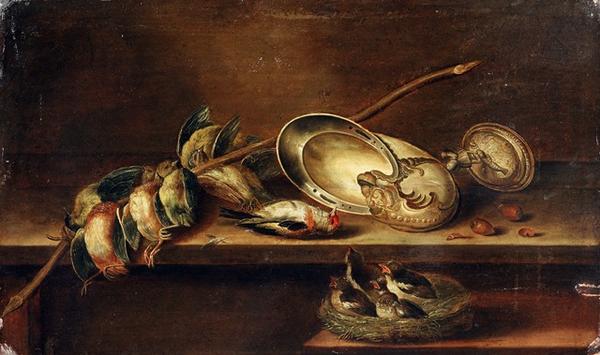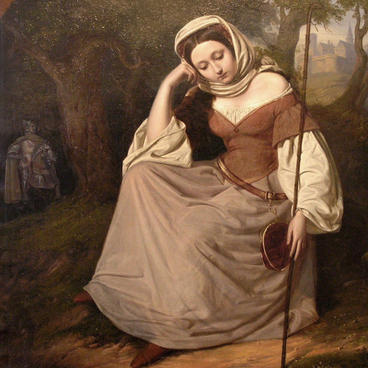Still life (stilleven — “the silent life of things”) developed into a separate genre of painting in Holland in the 17th century. Before that it had long had an auxiliary function, being fitted into the composition of paintings of other genres, supplementing, decorating or accentuating the subject.
It was not common to paint a still-life from a “random” location — all compositions were carefully arranged, objects for the image were selected on the basis of artistic and conceptual goals.
Dutch artists, followed by those from elsewhere, regarded still life as an opportunity to speak of the eternal through the material. Paintings of the genre contained a whole set of meanings at once. A classical still life always included several levels of interpretation: mundane, allegorical and edifying, that expresses morality.
There were many varieties of this genre: “kitchen” and “luxury”, “hunting” and “flower”, “fish stall” and “set table”, vanitas (usually with skulls), “breakfast”, etc.
In his still life with birds the unknown artist combines things made by man and those created by God. On one canvas there is a goblet made of a nautilus shell, and shelves where all the elements of the still life, birds, and nuts are placed. The artist puts living and dead nature together: chicks in the nest and birds that were shot dead. There is a slightly less active symbol — whole nuts and their shells. This helps the artist to express the futility of being and the transience of existence, the cyclical nature of life, its transformation into death.
The work is executed in a small format, it is elongated horizontally, so that the image is constructed in a limited space. But an illusory depth of space is created by the arrangement of the objects: in the foreground there is a certain elevated surface with a bird’s nest; the main focus is placed on the middle shelf. The branch with birds hanging by their necks is laid diagonally stretching from the upper right corner to the lower left. It seems to be slipping off the surface toward the viewer, a technique that enables the artist to build perspective.
The painter also places an emphasis on the light: the brown background, devoid of detail, contrasts with the shimmer of the shell, the shine of its metallic rim, and the glitter of the bird’s plumage.
It was not common to paint a still-life from a “random” location — all compositions were carefully arranged, objects for the image were selected on the basis of artistic and conceptual goals.
Dutch artists, followed by those from elsewhere, regarded still life as an opportunity to speak of the eternal through the material. Paintings of the genre contained a whole set of meanings at once. A classical still life always included several levels of interpretation: mundane, allegorical and edifying, that expresses morality.
There were many varieties of this genre: “kitchen” and “luxury”, “hunting” and “flower”, “fish stall” and “set table”, vanitas (usually with skulls), “breakfast”, etc.
In his still life with birds the unknown artist combines things made by man and those created by God. On one canvas there is a goblet made of a nautilus shell, and shelves where all the elements of the still life, birds, and nuts are placed. The artist puts living and dead nature together: chicks in the nest and birds that were shot dead. There is a slightly less active symbol — whole nuts and their shells. This helps the artist to express the futility of being and the transience of existence, the cyclical nature of life, its transformation into death.
The work is executed in a small format, it is elongated horizontally, so that the image is constructed in a limited space. But an illusory depth of space is created by the arrangement of the objects: in the foreground there is a certain elevated surface with a bird’s nest; the main focus is placed on the middle shelf. The branch with birds hanging by their necks is laid diagonally stretching from the upper right corner to the lower left. It seems to be slipping off the surface toward the viewer, a technique that enables the artist to build perspective.
The painter also places an emphasis on the light: the brown background, devoid of detail, contrasts with the shimmer of the shell, the shine of its metallic rim, and the glitter of the bird’s plumage.


